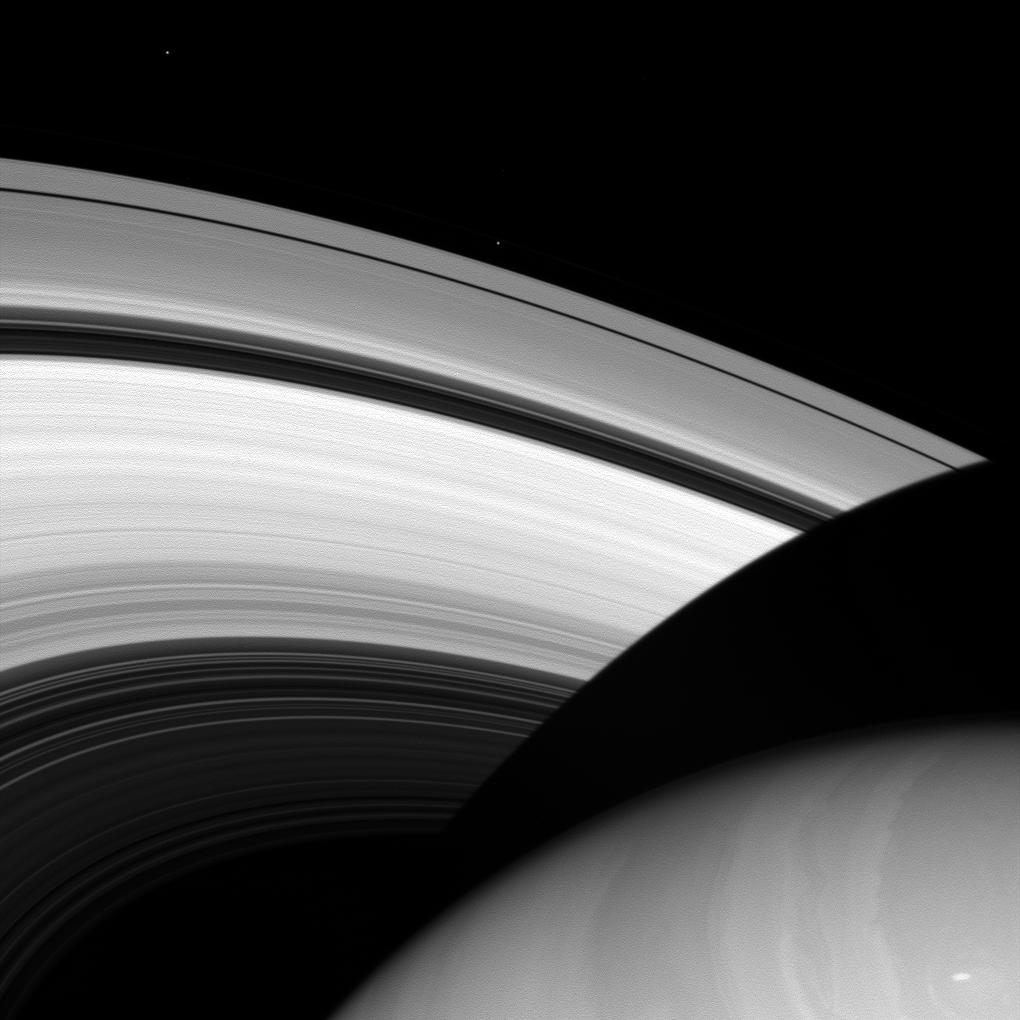A Forethought and an Afterthought

| PIA Number | PIA18286 |
|---|---|
| Language |
|
Befitting moons named for brothers, the moons Prometheus and Epimetheus share a lot in common. Both are small, icy moons that orbit near the main rings of Saturn. But, like most brothers, they also assert their differences: while Epimetheus is relatively round for a small moon, Prometheus is elongated in shape, similar to a lemon.
Prometheus (53 miles, or 86 kilometers across) orbits just outside the A ring - seen here upper-middle of the image - while Epimetheus (70 miles, 113 kilometers across) orbits farther out - seen in the upper-left, doing an orbital two-step with its partner, Janus.
This view looks toward the sunlit side of the rings from about 28 degrees above the ringplane. The image was taken in visible light with the Cassini spacecraft wide-angle camera on July 9, 2013.
The view was obtained at a distance of approximately 557,000 miles (897,000 kilometers) from Saturn and at a Sun-Saturn-spacecraft, or phase, angle of 11 degrees. Image scale is 33 miles (54 kilometers) per pixel. Prometheus and Epimetheus have been brightened by a factor of 2 relative to the rest of the image to enhance their visibility.
The Cassini-Huygens mission is a cooperative project of NASA, the European Space Agency and the Italian Space Agency. The Jet Propulsion Laboratory, a division of the California Institute of Technology in Pasadena, manages the mission for NASA's Science Mission Directorate in Washington. The Cassini orbiter and its two onboard cameras were designed, developed and assembled at JPL. The imaging team is based at the Space Science Institute, Boulder, Colo.
For more information about the Cassini-Huygens mission visit http://saturn.jpl.nasa.gov or http://www.nasa.gov/cassini . The Cassini imaging team homepage is at http://ciclops.org .
Credit: NASA/JPL-Caltech/Space Science Institute
